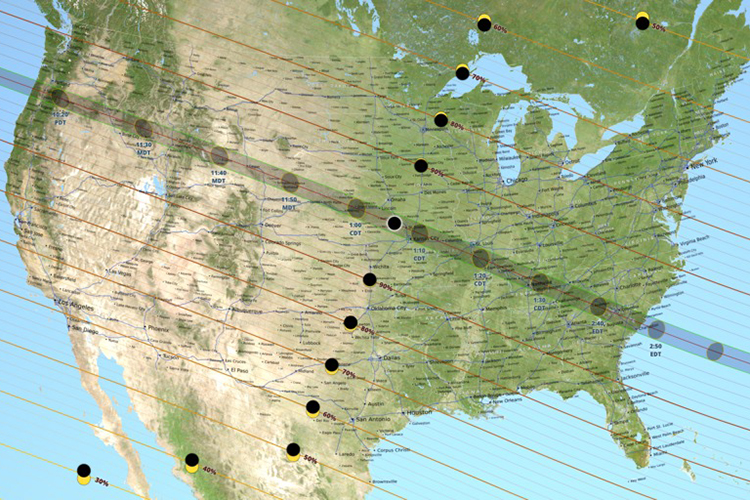Milwaukeeans have a chance Monday to experience something that hasn’t happened in almost a century — a near total eclipse of the sun. At noon, unless it’s very cloudy, the sky will begin to get unusually dark.
“There will be enough of a darkening that people who are aware of their surroundings would look up and think, ‘There’s something strange going on,’” said Jean Creighton, director of the UWM Manfred Olson Planetarium.
On that day, the moon passes between the sun and the Earth and is visible throughout the U.S. In southern Wisconsin, the moon will cover 86 percent of the sun’s surface. Those living farther south and in a path stretching from Oregon to South Carolina will see total blockage, with only the sun’s glowing edges visible.
The next time Wisconsinites will be able to see a solar eclipse will be in 2024.
To celebrate the event, the UWM planetarium staff will host a NASA-sanctioned viewing and picnic event, with telescopes and safety eyewear available. It will be held outside the facility on the west end of the lawn at the corner of Kenwood Boulevard and Maryland Ave. from 11 a.m. to 3 p.m.
The moon will begin to move in front of one edge of the sun at 11:53 a.m. local time. It will peak at 1:18 p.m., covering most of the sun, before moving off completely by 2:40 p.m.
Sky-watchers are advised to wear special safety eyewear to look directly at the eclipse because even observing a small portion of the sun without protection can permanently harm the eyes or even cause blindness. Special viewing glasses will be available for purchase at the UWM event. Those glasses meet appropriate safety requirements and should not be confused with unsafe eclipse glasses given out earlier this month by physics students at two community events.
The planetarium event also will include live music, a raffle, lawn games and a bouncy house. Bring your own picnic, but some food will be available for purchase. A $5 donation is suggested.
In case of rain, livestreams of the eclipse will be shown inside the planetarium, which is also presenting a theatrical production, “The Sun’s Disappearing Act,” at 11:15 a.m. and again at 2 p.m.
“The Sun’s Disappearing Act,” which explores the science, history and culture of solar eclipses, will also be staged at 7 p.m. Thursday, Aug. 17, and Friday, Aug. 18.
For tickets, go to https://www.eventbrite.com/e/the-suns-disappearing-act-tickets-35978485619.
For more information, go to https://uwm.edu/planetarium/.







